Induction of IL-25 secretion from tumour-associated fibroblasts suppresses mammary tumour metastasis
- PMID: 27089063
- PMCID: PMC4837478
- DOI: 10.1038/ncomms11311
Induction of IL-25 secretion from tumour-associated fibroblasts suppresses mammary tumour metastasis
Erratum in
-
Erratum: Induction of IL-25 secretion from tumour-associated fibroblasts suppresses mammary tumour metastasis.Nat Commun. 2016 Jun 3;7:11909. doi: 10.1038/ncomms11909. Nat Commun. 2016. PMID: 27255735 Free PMC article. No abstract available.
Abstract
Tumour-associated fibroblasts (TAFs), as a functionally supportive microenvironment, play an essential role in tumour progression. Here we investigate the role of IL-25, an endogenous anticancer factor secreted from TAFs, in suppression of mouse 4T1 mammary tumour metastasis. We show that a synthetic dihydrobenzofuran lignan (Q2-3), the dimerization product of plant caffeic acid methyl ester, suppresses 4T1 metastasis by increasing fibroblastic IL-25 activity. The secretion of IL-25 from treated human or mouse fibroblasts is enhanced in vitro, and this activity confers a strong suppressive effect on growth activity of test carcinoma cells. Subsequent in vivo experiments showed that the anti-metastatic effects of Q2-3 on 4T1 and human MDA-MD-231 tumour cells are additive when employed in combination with the clinically used drug, docetaxel. Altogether, our findings reveal that the release of IL-25 from TAFs may serve as a check point for control of mammary tumour metastasis and that phytochemical Q2-3 can efficiently promote such anticancer activities.
Figures
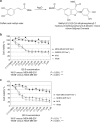
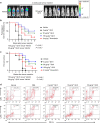
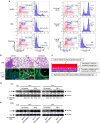
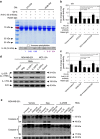
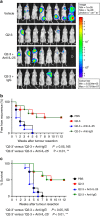

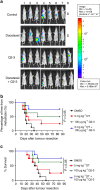
Similar articles
-
Antitumor and antimetastatic activities of chloroquine diphosphate in a murine model of breast cancer.Biomed Pharmacother. 2010 Nov;64(9):609-14. doi: 10.1016/j.biopha.2010.06.004. Biomed Pharmacother. 2010. PMID: 20888174
-
Crateva adansonii DC, an African ethnomedicinal plant, exerts cytotoxicity in vitro and prevents experimental mammary tumorigenesis in vivo.J Ethnopharmacol. 2016 Aug 22;190:183-99. doi: 10.1016/j.jep.2016.06.004. Epub 2016 Jun 4. J Ethnopharmacol. 2016. PMID: 27267829
-
Pharmacological inhibition of the IKKε/TBK-1 axis potentiates the anti-tumour and anti-metastatic effects of Docetaxel in mouse models of breast cancer.Cancer Lett. 2019 May 28;450:76-87. doi: 10.1016/j.canlet.2019.02.032. Epub 2019 Feb 18. Cancer Lett. 2019. PMID: 30790681
-
Baicalein suppresses metastasis of breast cancer cells by inhibiting EMT via downregulation of SATB1 and Wnt/β-catenin pathway.Drug Des Devel Ther. 2016 Apr 18;10:1419-41. doi: 10.2147/DDDT.S102541. eCollection 2016. Drug Des Devel Ther. 2016. PMID: 27143851 Free PMC article.
-
Molecular biology of breast cancer metastasis. Clinical implications of experimental studies on metastatic inefficiency.Breast Cancer Res. 2000;2(6):400-7. doi: 10.1186/bcr86. Epub 2000 Jul 21. Breast Cancer Res. 2000. PMID: 11250733 Free PMC article. Review.
Cited by
-
Transcriptomic analysis reveals a controlling mechanism for NLRP3 and IL-17A in dextran sulfate sodium (DSS)-induced colitis.Sci Rep. 2018 Oct 8;8(1):14927. doi: 10.1038/s41598-018-33204-5. Sci Rep. 2018. PMID: 30297787 Free PMC article.
-
Cisplatin inhibits the growth, migration and invasion of cervical cancer cells by down-regulating IL-17E/IL-17RB.Int J Clin Exp Pathol. 2017 Sep 1;10(9):9341-9351. eCollection 2017. Int J Clin Exp Pathol. 2017. PMID: 31966806 Free PMC article.
-
Pan-Cancer analysis and experimental validation identify the oncogenic nature of ESPL1: Potential therapeutic target in colorectal cancer.Front Immunol. 2023 Mar 16;14:1138077. doi: 10.3389/fimmu.2023.1138077. eCollection 2023. Front Immunol. 2023. PMID: 37006282 Free PMC article.
-
Intervenolin suppresses gastric cancer cell growth through the induction of TSP-1 secretion from fibroblast-like stromal cells.Oncol Lett. 2018 Nov;16(5):6777-6785. doi: 10.3892/ol.2018.9485. Epub 2018 Sep 21. Oncol Lett. 2018. PMID: 30405822 Free PMC article.
-
Dual Functions of T Lymphocytes in Breast Carcinoma: From Immune Protection to Orchestrating Tumor Progression and Metastasis.Cancers (Basel). 2023 Sep 28;15(19):4771. doi: 10.3390/cancers15194771. Cancers (Basel). 2023. PMID: 37835465 Free PMC article. Review.
References
-
- Herbst R. S. et al. Clinical Cancer Advances 2005: major research advances in cancer treatment, prevention, and screening--a report from the American Society of Clinical Oncology. J. Clin. Oncol. 24, 190–205 (2006). - PubMed
-
- Weigelt B., Peterse J. L. & van 't Veer L. J. Breast cancer metastasis: markers and models. Nat. Rev. Cancer 5, 591–602 (2005). - PubMed
Publication types
MeSH terms
Substances
LinkOut - more resources
Full Text Sources
Other Literature Sources
Medical

